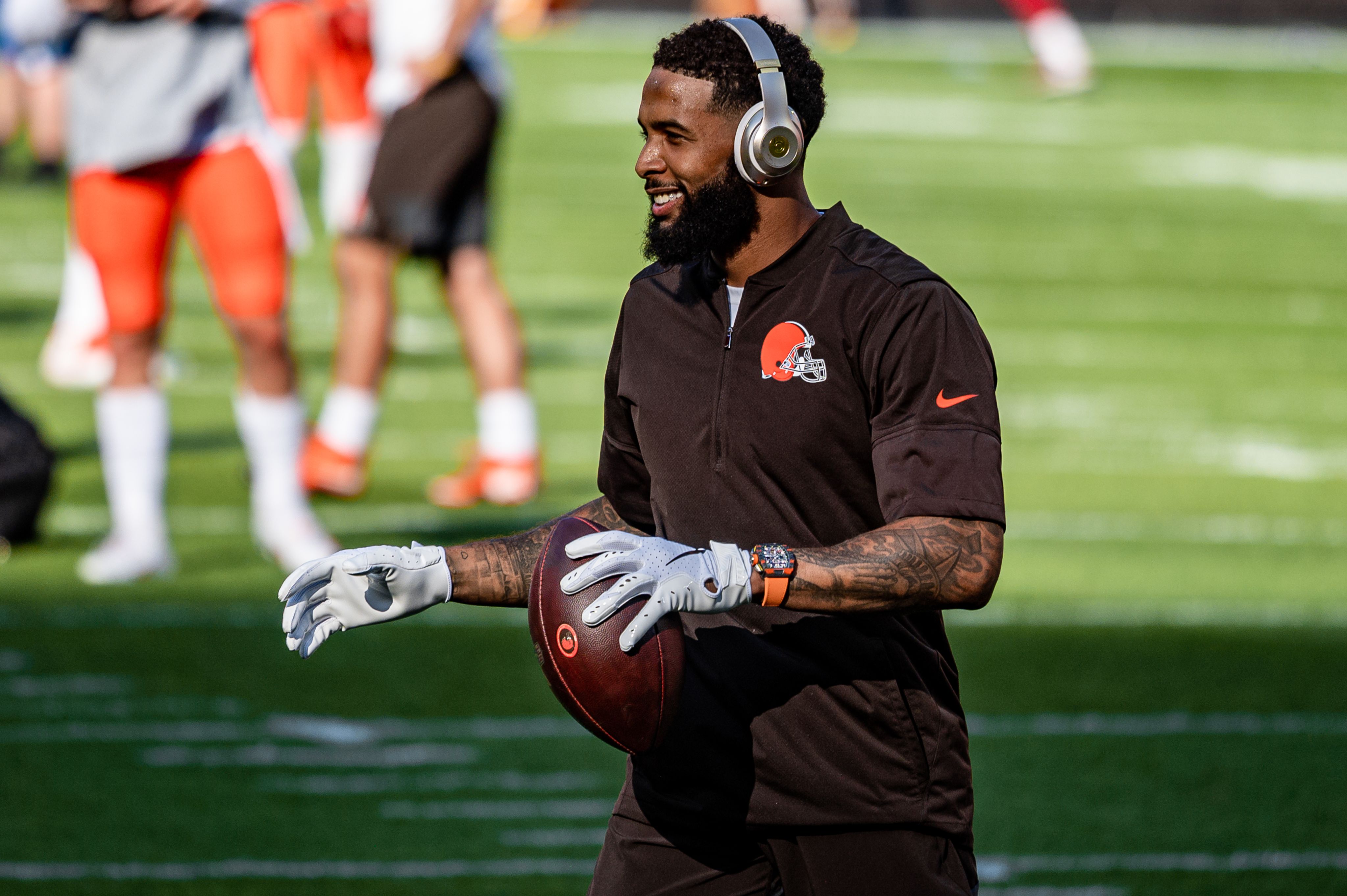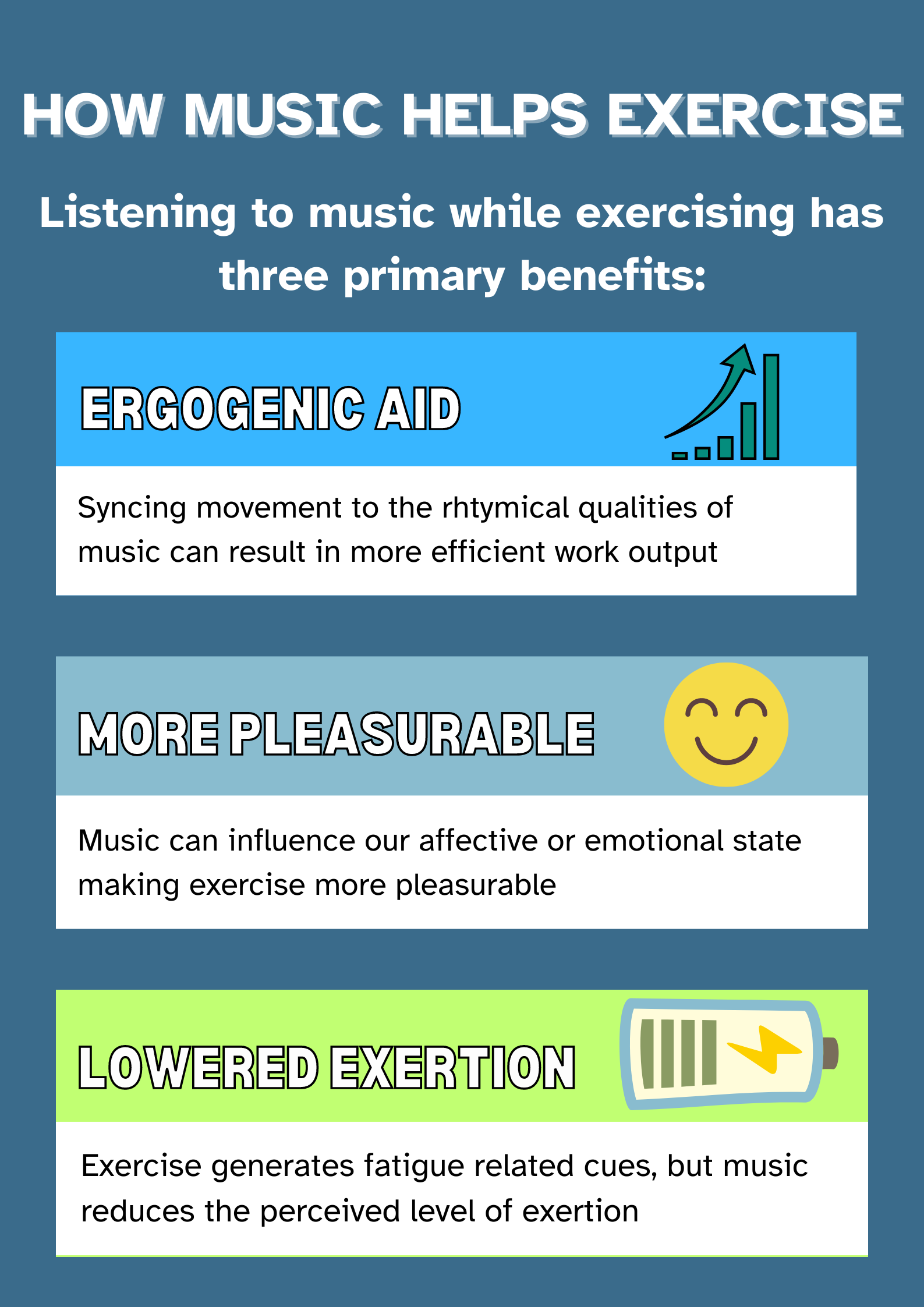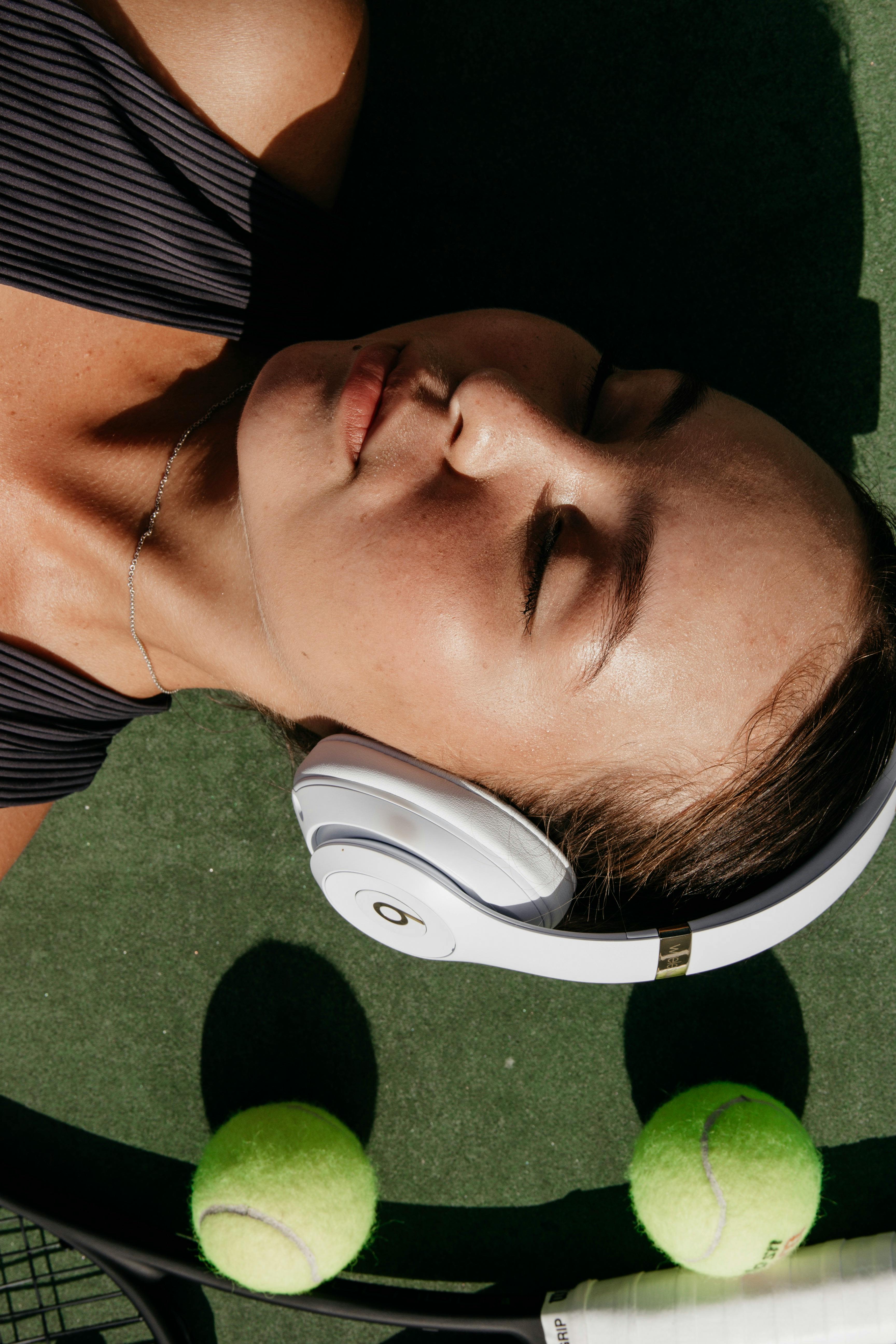Music, the legal performance-enhancing drug
How music can boost your athletic performance

Throughout his career, Michael Phelps had a distinctive ritual before taking to the water.
The most decorated Olympian of all time was known to wear large headphones as he walked out to the poolside, listening to music until the last possible moment.
After winning six gold medals at the Athens Olympics in 2005, Phelps was asked about his pre-race ritual.
He told The Guardian: “It helps me to relax and get into my own little world.”
Phelps later revealed that his music selection was actually far from relaxing.
His pre-race playlist included rappers known for their energy and aggression such as Eminem and Lil Wayne.
Relaxing or not, it is hard to argue with Phelps and his 28 career Olympic medals.
Phelps' choice of music worked by putting him in the optimal mindset to compete - and scientific research can explain why.

Professor Costas Karageorghis is a world-leading sport and exercise psychology researcher based at Brunel University London.
His work, summarised in the new book Applying Music in Exercise and Sport, has looked at how music can boost athletic performance.
He has also collaborated directly with clubs, national bodies, and athletes on bespoke music programs.
Professor Karageorghis likened music to a type of legal performance-enhancing drug.
He said: "One strand of our research has examined how athletes and exercisers can use music pre-task as a type of stimulant or sedative to engender an optimal mindset before they perform."
Michael Phelps is a prime example of this area of research.
Professor Karageorghis said: “When Phelps was at the London Olympic Games, he had the track I’m Me by Lil Wayne playing on a loop.
“The song has the refrain: ‘Yes, I am the best - and no, I ain’t positive, I’m definite.’
“You can see that there was a very strong lyrical affirmation for Phelps within that particular track.”
Speaking about the song to Rolling Stone in 2012, Phelps said: "Just the name of the song made sense to me, given where I’m at right now, and how I felt at the 2008 Games."
Professor Karageorghis stressed that, for pre-performance music to be most effective, the athlete must be able to find a personal meaning within the music - an extra musical association, as he put it.
This is precisely why Lil Wayne's 'I'm Me' worked for Phelps, as it spoke to the dominance he was feeling at time.
In the video below, Professor Karageorghis explains how he put this into action when working with an athlete named Jenny.
Pre-task music is just one strand of his research, as he has also extensively studied the effects of listening to music at the same time as exercising.
Professor Karageorghis and other researchers have found three main benefits to listening to music while exercising:

While Phelps and other professional athletes are not permitted to listen to music while competing, amateur athletes and casual exercisers can use music to aid their performance in these ways.
Running, in particular, is a sport that has long been associated with listening to music - whether runners are directly aware of the benefits are not.
Data analyst Jordan Stainer, 26, took up running around nine years ago and ran his first official marathon in Rome in March 2024.
Stainer explained that he normally listens to music while he runs and chooses the music based on his mood or the duration of the run.
However, for the Rome marathon, he tried something a little different to help get him through his toughest challenge yet.
Stainer, pictured left while running in Rome, said: "I got friends to add a song each to a playlist, so then when it came up, I would hear their song and think of that person.
"The songs that helped the most weren't my favourite songs, they were the songs that reminded me of my partner or my friends.
"My partner added songs from Six the musical, which was actually so funny and was a better distraction than the music I chose myself, which almost became background noise because I expected them more.
"I think High School Musical came on too and it was those funny ones that got me through the marathon to be honest."
In general though, Stainer chooses his own music while running and enjoys a variety of different genres.
He said "When I do a quick parkrun or something then I choose an album with a really intense start.
"The Arctic Monkeys album Favourite Worst Nightmare opens with songs like Brianstorm and D is for Dangerous, and I enjoy starting with songs like that with really intense drums and guitar."
Surprisingly, Stainer mostly listens to entire albums while running, rather than a dedicated running playlist.
He explained: "I like listening to whole albums end-to-end, I use it to experiment with new albums or to track how long I've been running.
"In 2020 Kanye West released several albums that were 20 minutes long, so I can run a 20-minute 5k while listening to one of those and know that the album is coming to an end quickly.
"I don't actually have dedicated running playlists but I use other playlists, so I have a hip-hop playlist or an all-female artists R&B playlist - I just listen to whatever I'm in the mood for.
"In the marathon, some of the bangers I love helped as well - anything with a big beat or bass, like The Essence by Giggs or a few J. Cole songs from his album The Off-Season."
When asked about the advantages of listening to music while running, Stainer had two main answers.
He said: "The biggest benefits are, firstly, a distraction from running.
"I love running but music can really help to get you in a nice rhythm.
"It's also a fantastic way to listen to albums that have been recommended to me."
Interestingly, the benefits outlined by Stainer touch on points raised by Professor Karageorghis, despite being unaware of his research.
Stainer's practice of listening to different albums each run helps keep the music fresh and impactful.
Professor Karageorghis explained: "If you overlisten to a piece of music, you reduce its efficacy and also risk engendering boredom and irritation through increased exposure.
"So churning a playlist and having a number of playlists that you can draw upon is key to optimising pieces of music."
Moreover, Stainer's reference to music helping the rhythm of a run seems to echo the research that has studied music as an ergogenic aid.
Professor Karageorghis said: "Ergogenic is a word that means work enhancing or work producing.
"And it seems that under certain circumstances, in particular, when the music is selected with the desired work rate of an individual in mind, syncing human locomotion to the rhythmical qualities of music can result in a significant ergogenic.
"So in endurance type activities, this can be as great as 10 to 15 percent with people who are recreationally active."
Music can be effective, then, without having an understanding of the science behind the benefits.
But this understanding is certainly helpful when it comes to selecting the optimal music for a specific workout.

Professor Karageorghis used his own knowledge to showcase the process of creating a playlist catered to enhancing physical performance.
He said: "If I were developing a running playlist for myself, I might start with a track that is relatively slow to ease me from a sedentary state to an active state that has a high level of extra-musical association.
"So I might go for something like Chariots of Fire by Vangelis, because it inspires that imagery of Olympians of old.
"If I'm mentally preparing, I might use something like Ready to Run by Dixie Chicks, which has a higher tempo of 99 beats per minute.
"In the early stages of my run, particularly if it's late in the evening, I might use Running With The Night by Lionel Richie which has as a tempo of 120 beats per minute.
"So for a low intensity running workout, that's absolutely perfect.
"As I get a little bit faster, I might use a track like Born to Run by Bruce Springsteen.
"That has a tempo of 148 beats per minute, and it might coincide with the apex of my running workout.
"As I warm down, I might use Move Your Feet by Junior Senior, a dance track at 119 beats per minute.
"And then as I go into cool-down, taking myself back to a sedate state, I might use Waterfalls by TLC, which has an R&B tempo of 86 BPM.
"This is very soothing and leaves me ready mentally and physically for whatever might lie ahead."

The songs referenced by Professor Karageorghis can be found in the adjacent playlist.
The playlist is only an example - the best use of music can often come from a personal connection to the songs, as discussed.
It is important to note, too, that listening to music can be dangerous while exercising, particularly cycling, in public.
Listening to Lil Wayne will also not turn you into Michael Phelps overnight.
However, music can still play a major role as a 'performance-enhancing drug' in your own sporting endeavours.
Image Credits
Featured image of Odell Beckham Jr. taken by Erik Drost, used under Creative Commons Attribution 2.0 Generic License
Image of Michael Phelps produced by Agencia Brasil, used under Creative Commons Attribution 3.0 Brazil License
Image of Rome Marathon runners provided by Jordan Stainer
Image of woman wearing headphones produced by Julia Kuzenkov via Pexels
Image of man running in mountainous landscape produced by Tembela Bohle via Pexels